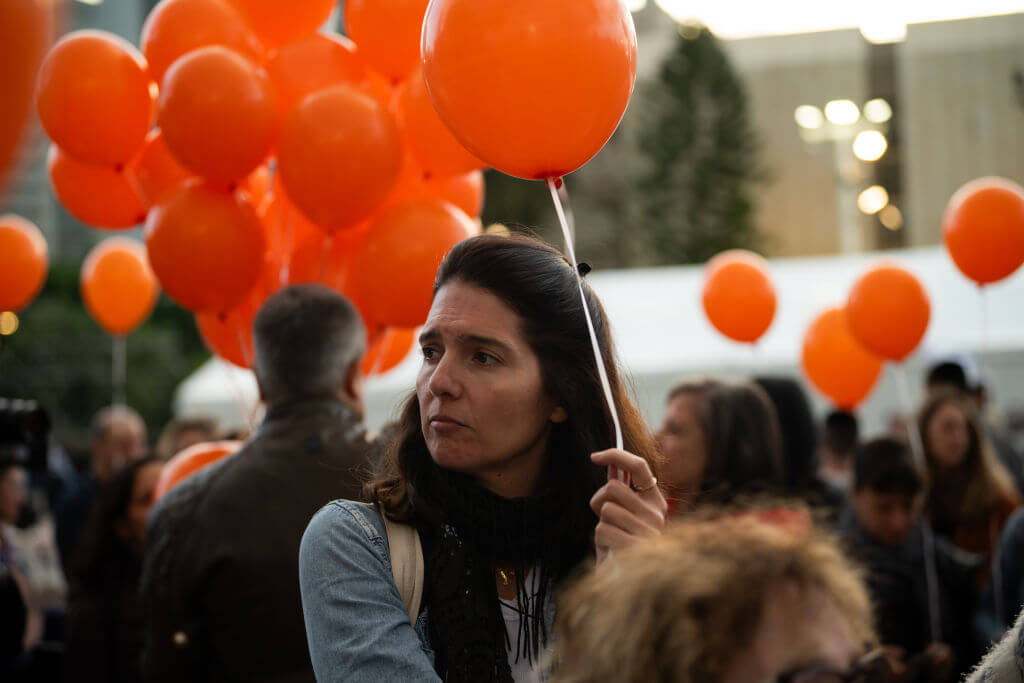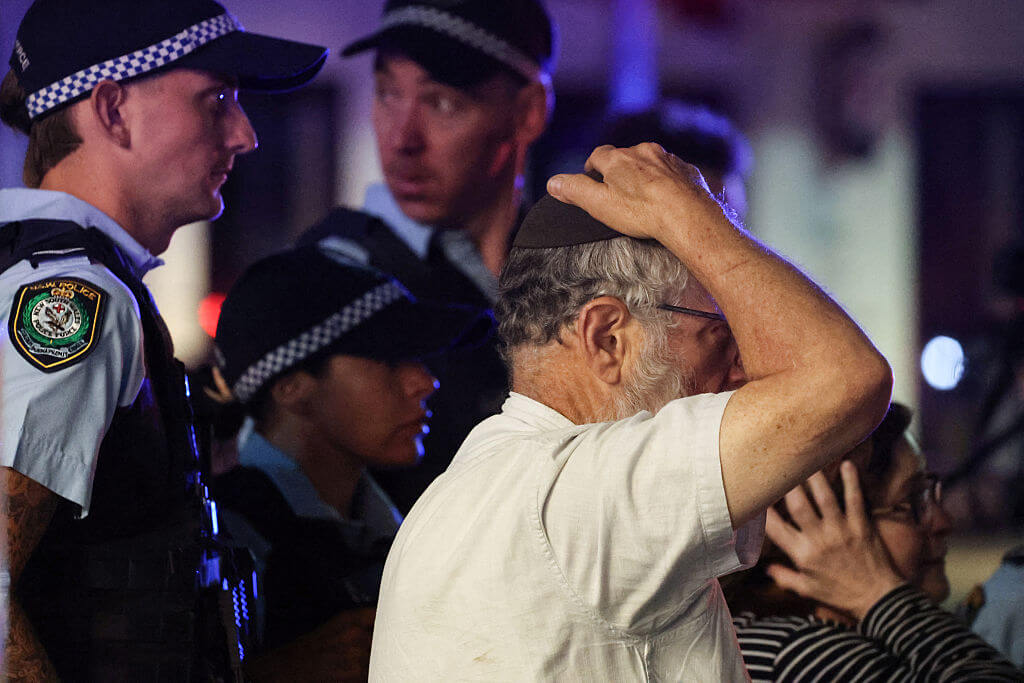As news of Bibas deaths sinks in, orange becomes color of Jewish grief
The redheaded Bibas boys, Ariel and Kfir, had come to symbolize national anguish after they were taken hostage on Oct. 7

Relatives of the Bibas family rally in Tel Aviv in November 2023. Photo by Getty Images
As Jews around the world prayed for the hostages taken captive on Oct. 7 attacks to return home safely, one family emerged as avatars of the captives’ collective innocence, and of the horrors of their imprisonment.
After the Israeli government confirmed on Wednesday the deaths of the three missing members of the Bibas family, Jews grieved together on social media, where an orange square and orange hearts — referencing the redheaded children Ariel and Kfir, and their mother, Shiri — quickly spread as symbols of heartbreak.
“We will not forget nor forgive,” read one message.
Shiri, the children and their father, Yarden, were kidnapped from Kibbutz Nir Oz and taken alive into Gaza, in Hamas-shot footage that circulated widely following the attacks. In the video, Shiri, holding the children, looked terrified as Hamas militants detained her.
Pictures of 9-month-old Kfir — the youngest of the 251 hostages — and Ariel, who was 4 when he was kidnapped, quickly became among the most ubiquitous images of the Israel-Hamas war. Their youth — and their bright red hair — helped them stand out from the hundreds of other hostages depicted on posters in the weeks after the attack.

And the images helped reclaim a narrative of Israeli victimhood that many felt was overshadowed by the pro-Palestinian protests that began in the aftermath of the attack. When an “All Eyes On Rafah” graphic trended on social media, pro-Israel accounts replied, “Can you look for the Bibas children?”
The Bibas family photos were used again in Israeli ceasefire protests, as part a plea for the government to pursue a hostage release.
Hamas, which kept Shiri and the children separate from Yarden, released the father Feb. 1.
There were indications that the three were dead long before Israel announced it Wednesday. While other hostages appeared in video shot by their captors, the last sign of life of Shiri and the children came from security camera footage that Israel said was taken in Khan Younis on Oct. 7. Hamas’ military wing said Shiri and the children were killed in an Israeli airstrike on Nov. 29, 2023; Israel has never addressed the possibility they died that way. And when a ceasefire was struck late last year, the Bibas children were not among the first hostages released.
All along, though, many Jews clung to hope that the family had somehow survived. Even as late as Tuesday, as NBC and other outlets published reports of the impending return of the Bibas family’s bodies, some Jews scolded peers who shared the information prematurely.
Others expressed fury that news outlets were declaring the family “deceased” rather than murdered. It remains unclear how the three died.















